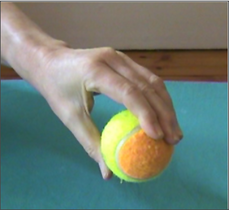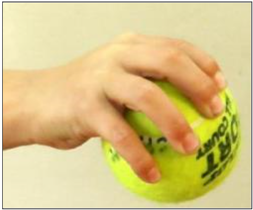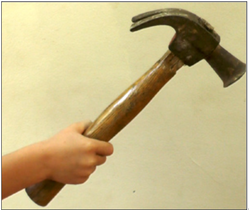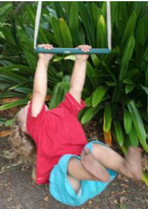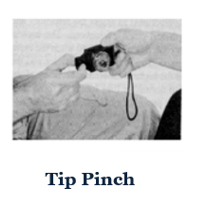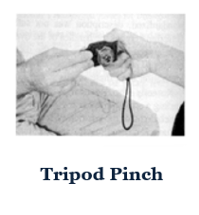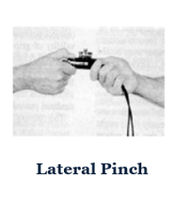Sporting Hand and Wrist - Why Power and Pinch Grips Matter: Difference between revisions
No edit summary |
No edit summary |
||
| Line 6: | Line 6: | ||
== Types of Grip == | == Types of Grip == | ||
Hand function and strength are important elements in day to day life and participation in sports <ref>Gatt I, Smith-Moore S, Steggles C, Loosemore M. The takei handheld dynamometer: an effective clinical outcome measure tool for hand and wrist function in boxing. HAND. 2018 May;13(3):319-24.</ref>. | The hand-wrist represents the most sophisticated tool in the human being. Hand function and strength are important elements in day to day life and participation in sports <ref name=":0">Gatt I, Smith-Moore S, Steggles C, Loosemore M. The takei handheld dynamometer: an effective clinical outcome measure tool for hand and wrist function in boxing. HAND. 2018 May;13(3):319-24.</ref>. | ||
1-Power Grip: the | 1-Power Grip: closing a hand with the thumb in opposition to all other fingers together generates a power grip<ref name=":1">Gatt I. Sporting Hand & Wrist - Why Power & Pinch Grips Matter. Physioplus Course 2020</ref>. | ||
A-Lumbrical grip | A-Lumbrical grip | ||
| Line 25: | Line 25: | ||
|} | |} | ||
2-Pinch grip: | 2-Pinch grip: generated by pressing the thumb pulp against the pulp of the index, middle, ring, and little fingers’ distal phalanges<ref name=":0" />. | ||
A-Tip Pinch: index pressing against the thumb | A-Tip Pinch: index pressing against the thumb | ||
| Line 31: | Line 31: | ||
B-Tripod Pinch: adding the middle finger | B-Tripod Pinch: adding the middle finger | ||
C-Lateral Pinch, also known as key pinch: thumb is going into adduction and flexion | C-Lateral Pinch, also known as key pinch: achieved by pressing the thumb pulp against the lateral aspect of the proximal interphalangeal joint of the index finger. In this grip, the thumb is going into adduction and flexion<ref name=":1" /> | ||
{| border="1" cellpadding="1" cellspacing="1" | {| border="1" cellpadding="1" cellspacing="1" | ||
|- | |- | ||
Revision as of 14:56, 24 December 2020
Types of Grip[edit | edit source]
The hand-wrist represents the most sophisticated tool in the human being. Hand function and strength are important elements in day to day life and participation in sports [1].
1-Power Grip: closing a hand with the thumb in opposition to all other fingers together generates a power grip[2].
A-Lumbrical grip
B-Spherical grip
C-Hammer grip
D-Hook grip
| Lumbrical grip | Spherical grip | Hammer grip | Hook grip |
|---|
2-Pinch grip: generated by pressing the thumb pulp against the pulp of the index, middle, ring, and little fingers’ distal phalanges[1].
A-Tip Pinch: index pressing against the thumb
B-Tripod Pinch: adding the middle finger
C-Lateral Pinch, also known as key pinch: achieved by pressing the thumb pulp against the lateral aspect of the proximal interphalangeal joint of the index finger. In this grip, the thumb is going into adduction and flexion[2]
| Tip Pinch | Tripod Pinch | Lateral Pinch |
|---|
